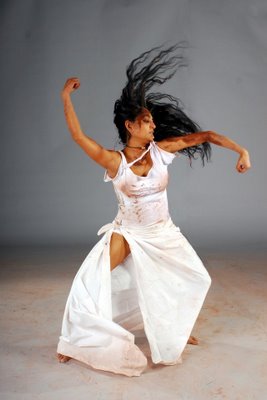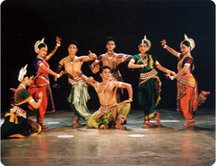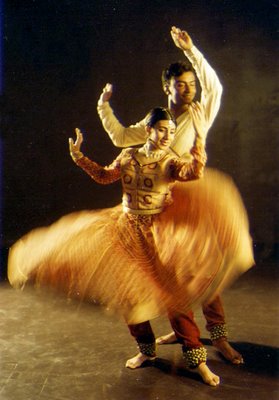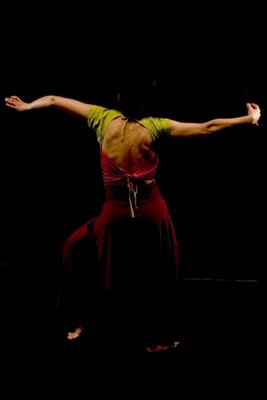|
|
| Reviews |
| |
Aug 18 - 21: Erasing Borders (NYC)
AN EXCLUSIVE PREVIEW:
for The Odissi Discussion Group, By Rajika Puri
|
Erasing Borders
Indo American Arts Council (IAAC)’s First Annual Festival of Dance
Featuring new and group works
August 18-21, 2008
New York, New York
Purchase Tickets Here
|
Over four days in New York, the IAAC - known to date for its visionary festivals of film, playwriting, music, and visual art - will feature a range of new (or original) works from all over the US, and Canada, as well as the UK and India, in its first festival dedicated to dance. Apart from outdoor and indoor performances, there will be panel discussions, workshops, film screenings, and an illustrated talk; the evening performances will be followed by Q & A sessions with the choreographers.
|
 |
Beginning on August 18 and 19 under the aegis of Battery Dance Company’s 27TH ANNUAL DOWNTOWN FESTIVAL with noon-time performances in Chase Plaza, the festival will then move to the Ailey Studios and Ailey Citygroup Theater (on 55th St and 9th Avenue) for conference sessions, and two evening performances at 7.30 p.m. on August 20 and 21. Eight of the companies represented perform in both venues – but with different dances.
|
 |
Of the 15 companies (or solo dancers) presented, only three include Odissi as the basis of their work: Nayikas (who perform in conjunction with Rudrakshya), Ananya Dance Theater, and MariaColacoDance, the last two admittedly using it only as a part of their innovative movement vocabulary. Two other sets of performers - Anurekha Ghosh & Co and Parul Shah and Prashant Shah - come from a Kathak base. The rest are basically trained in Bharatanatyam.
|
 |
In some cases, works remain close to tradition. Costumes, music, choreography, themes and their very names - Janaki Rangarajan’s “Swarajathi”, Natya Dance Theatre’s “Mallari”, and Manu Kala Mandir’s“Ardhanarishwara Stotra” - proclaim their origins in Indian classical dance forms. A large number, however, break away from tradition, and explore theatrical, performance art, and even marital arts techniques. They use new music - and spoken texts, and take their themes from the world around them. Many express concerns about identity, self-hood, and gender.
|
 |
Sampradaya Dance Creations “Shunya” evokes the mystery of the void in three Asian cultures, Manijeh Ali’s “Spirit of the Mountain” and Thresh’s “Tides of the Moon” turn to nature to either evoke a sense of isolation and vulnerability, or to set up a dialogue between Indian and western forms of movement. Four works in particular are not only very personal but even autobiographical. Dakshina/Daniel Phoenix Singh’s “Nomadic Still” deals with family relationships and Parijat Desai Dance Company’s “The Wall” with a widow’s loneliness; Sudarshan Belsare’s “Carmine Bees” deals with gender expression, and Sinha Danse’s “Quebasian Rhapsody” incorporates the very personal dynamic of this Asian-western dancer from Quebec.
|
 |
Underlying most of the performances - and indeed a large part of new work in Indian dance - is a bid to move out of the confines of received categories, to question them, and establish a dialogue between them. This naturally reflects the concerns of the choreographers themselves, whose very lives express this crossing of boundaries, ethnic, geographical, cultural or otherwise. These issues are raised in the many daytime conference sessions, too, as in panel discussions on “Re-interpretation of Traditional Movement” and “Issues of Identity, Immigration and Change in India Dance”.
Thus in many ways the conference lives up to its name, indeed by its very name it captures what most artists in the Indian diaspora do - they work to erase borders.
|
| http://odissi.blogspot.com/ |
| |
|

